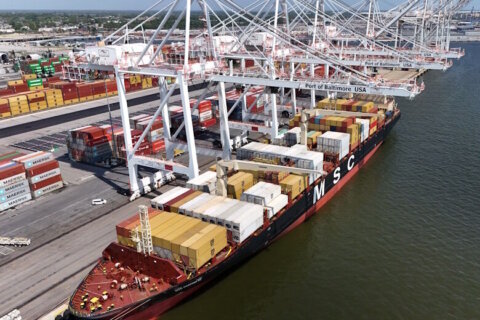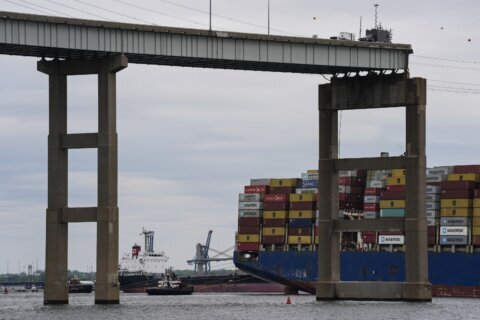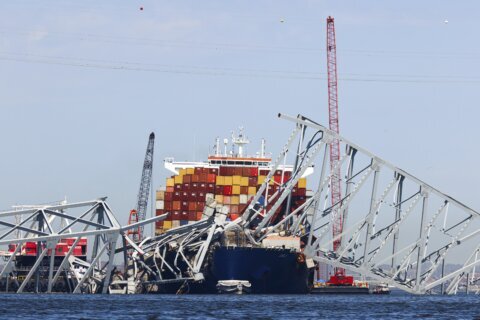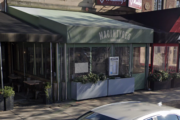It’s been two weeks since a giant container ship slammed into Baltimore’s Key Bridge sending most of the bridge plunging into the Patapsco River.
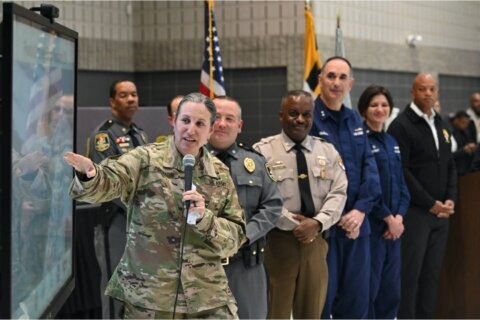
Crews from federal and state agencies are trying to get everything cleaned up and moved out of the shipping channel to try and get it reopened so larger ships can make their way to the Port of Baltimore — an extremely complex task.
One of those on the front line of the operation is the Baltimore District Commander of the Army Corps of Engineers Col. Estee Pinchasin, who joined WTOP’s Shawn Anderson and Anne Kramer for a live interview from Dundalk, Maryland.
Listen to the full interview below, and read the transcript.
Anne Kramer: Colonel, thanks so much for being on with us. We appreciate your time. Could you paint a picture for us of what the site actually looks like today as the work continues to remove those massive pieces of metal and concrete?
Col. Estee Pinchasin: So I was just out there today, actually, and you can still see from the skyline those trusses going into the water. And unfortunately, what you can’t see is the complexity of the wreckage that’s mangled and collapsed on itself on the bottom of the riverbed. So you see a lot of cranes, a lot of barges and tugboats that are having to support the operations out there. But also you have a lot of movement of equipment heading back out to Trade Point Atlantic, where we’re securing and ensuring that the equipment will be able to get through the next few days of some inclement weather that we’re expecting.
Shawn Anderson: Now, the governor has said the hope is to have a 35-foot-deep channel open by the end of this month. With so much wreckage in the river there, as you describe, is that a reasonable timeline? Will it be removed from the bottom of the river by then?
Col. Estee Pinchasin: So, absolutely. It is not a hope — it’s a plan. We are planning to have that 35-foot-deep channel, 280 feet wide, we are planning to have that open by the end of April. Everyone should remember that that channel is normally 50-feet deep. We maintain it, the Baltimore District of the Corps of Engineers maintains that channel at a 50-foot depth to allow all that shipping traffic to come into the Port of Baltimore. So now we have to remove the wreckage from the bottom.
And while the wreckage is sitting at the bottom of the riverbed there, we are going to be able to remove what I call the span on the far side of the channel. So across from the vessel, that big span that you can see coming out of the water, that alone is 240 feet and parts of it already go deep into the mud line. So we know that as we remove that, we’re going to have portions of that 35-foot channel that are actually deeper. We’re going to have to then pick up other portions of the wreckage, which includes the road debris, and other steel that has been broken off from the bottom of the riverbed.
But what we’re saying is we’re going to get it down to a depth of 35 feet, where those vessels are going to be able to go through, and as we’re trafficking that through — controlling it with the Coast Guard — we’ll continue to deepen and deepen the channel … as we clear wreckage down until we get to 50 feet.
Anne Kramer: So, Colonel, that’s going to take a while to get to all of the wreckage that’s at the bottom of the Patapsco there. Will any of it just stay there since it’s kind of caught up in the mud and muck, or is that too dangerous?
Col. Estee Pinchasin: No, ma’am, we are not going to leave the wreckage at the bottom of the channel. We are going to take it all out, even the wreckage that’s under the mud line. We don’t want to leave that behind. Because, remember, we maintain that channel at a 50-foot depth. We bring in our dredging contractors that come in and maintain that channel for us. And we certainly don’t want them running into any left-behind steel or any left-behind wreckage debris. We are going to clear it completely out, and it might be challenging to get below the 50 feet — where the steel came under the mud line and below what we would normally maintain — but we don’t want to leave it behind so that it would emerge and be a obstruction to navigation later on.
Shawn Anderson: Colonel, before we go — the bodies of three of the construction workers who died in the collapse are still in the water. What is the biggest biggest challenge right now to get to those bodies?
Col. Estee Pinchasin: So first of all, we don’t know where they are. I can’t say how proud I am of the team. We we have implemented a plan that allows us to ensure that at every every step, every time we remove a layer of wreckage, we are looking at what we see and we’re scanning the wreckage for how it reacted. But we’re also looking for any shred of information, any chance of anything else that we need to investigate to see if any of those personnel — or any remnants, any parts of vehicles that give my give us a clue as to where they might be — we’re looking to see where they are. And as you remember, a week ago today, we actually were successful in implementing that plan.
We have the Maryland State Police divers, on call ready to go the second we notice that something is indicating that we could find a missing person. We activated that plan, they responded immediately, and we were able to recover one of the missing persons last Friday. So it’s not just a plan, it’s a proven plan. We made that happen.
We were able to return and provide closure to that one family, we’ve still got three more. And that is a part of the plan. It’s not an afterthought. And I really hope that the families out there, that every day that goes by, they know that they have the absolute best team working on this. And it’s not lip service, you should see them out there. They’re really getting after it. And we’re just so proud and honored to be a part of that recovery mission for those families.
Anne Kramer: Colonel, we certainly appreciate your time and insight on all of this, and we’re glad to talk with you.
More Baltimore Key Bridge collapse coverage
- The latest on the Key Bridge collapse and recovery in Baltimore
- Investigators focus on electrical system of ship in Baltimore bridge collapse
- Third channel to open at Baltimore port as recovery from bridge collapse continues
- PHOTOS: Baltimore’s Francis Scott Key Bridge collapses after being struck by ship
Get breaking news and daily headlines delivered to your email inbox by signing up here.
© 2024 WTOP. All Rights Reserved. This website is not intended for users located within the European Economic Area.


